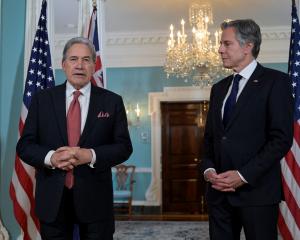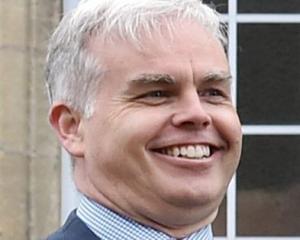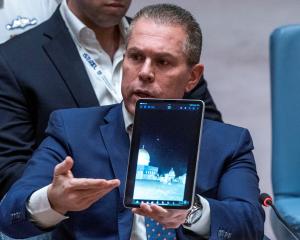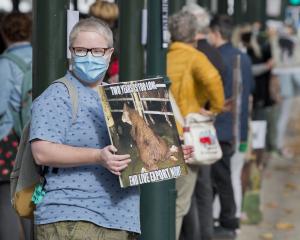
Achieving an 86% positive response to the recent online ODT poll - ''`Would you like to see a cable car operating up High St?'' - was a pleasant, but not surprising, result for the Dunedin Cable Car Trust. From the 994 votes cast, 852 were in favour.
The votes reflect the opinion of just under 1% of Dunedin's population, but it is enough to give us encouragement. Recreating the cable car on High St creates enormous challenges. To overcome these, the trust needs to be pragmatic and innovative to make sure Dunedin is left with an asset rather than a liability. To this end, the trust has spent a lot of time developing a project that will appeal to, and have the support of, a majority.
Some, including those in support of the cable car, are still under the misconception money for the project will come from the Dunedin City and Otago Regional Councils. However, the first matter agreed was that the trust was not going to ask the councils for a cent. We want to create a project the people of Dunedin and further afield can get behind and feel part of. Those who don't want to support the project would be under no financial obligation to do so.
The ultimate aim of the trust is to recreate the cable car up High St from the Exchange to Mornington, with profits from this community-based organisation - after depreciation costs and reinvestment etc - being returned into local community schemes and engineering apprenticeships, for example.
This project has the potential to redefine Dunedin in terms of its heritage and its future and be one people can feel part of. To this end, as much of the project as possible will be designed and built in Dunedin or wider Otago - it will be a living showcase for Dunedin and wider Otago engineering, as well as for innovation and modern technology. Accordingly, it will act as a magnet to attract visitors to come and see the many great things that Dunedin can offer.
Because the trust is under no deadline - other than a self-imposed one - it can build from a firm base and make progress in a steady but prudent manner.
This project will differ from recent ''large-scale'' projects in the city by being built in stand-alone phases. This is so each phase has a fall-back option in the event of funding for the next stage not being achieved. One of the important philosophies of the trust is to leave an asset that will continue to be an asset and not a liability.
There will be three main phases. The first will involve construction of a terminus building on Mornington Park if the necessary consents can be obtained and people's objections can be answered satisfactorily. This will create a building that will house the cable cars and motor, a museum and a cafe/restaurant offering views of the harbour.
Actual physical construction will not begin until the cost of the terminus building has been reached and passed. Once the target has been reached, the building will hopefully be designed by a local architectural/design company, with all building work being undertaken by local people working for local contractors who share the same outcomes and desires of the trust.
Fundraising for phase two will begin once sufficient money has been raised for phase one. It will be the main phase of the project and will consist of two main parts - the cable car track/infrastructure and the cable cars themselves. This second phase will be the most challenging and, hopefully, the most rewarding.
Progress with phase two will be in incremental stages, allowing for certain fundraising targets to be met before the next incremental stage can progress. This will avoid any unfinished construction works and provides a financial ''buffer'' for the future of the terminus building in the event of not enough funds being raised for the completion of phase two. The third phase will include the ''finishing touches'' such as the cable car stops and landscaping, as well as historical information boards and signs.
One of the exciting prospects is that what started as an idea for a cable car from the Exchange to Mornington is now, in the trust's thoughts and processes, the catalyst that will spark off the regeneration of the Mornington shopping area as well as bringing people and visitors from the Octagon to the Exchange area.
A result of this will be the regeneration of one of the most depressing stretches of road in Dunedin - Princes St from the Exchange to the Octagon - which could lead to a regeneration of this area. With all the brave heritage developers in the Exchange area and the plans for the warehouse precinct, it really could breathe new life into that part of town and really make Dunedin the heritage capital of New Zealand.
- Phillip Cole is chairman of the Dunedin Cable Car Trust












